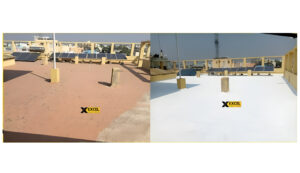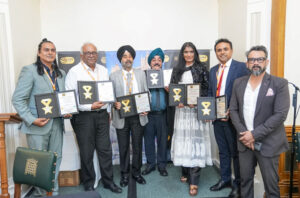The oldest fabric of India-Khadi and it’s impact and usage by contemporary designers
(Inputs by- Seema Kalavadia founder of Sparsh)
What role Khadi plays in your collection?
Since the inception of my label ‘SPARSH’, Khadi has been the heart of my every creation. I am highly fascinated with its uniqueness of a wonderful fabric that is skin friendly, woven with utmost respect to the environment and can be used in summer or in winter. For my collections, I research different varieties of Khadi available from time tested artisan groups for fabric weights and qualities. Considering it as one of the most celebrated fabrics in India, using Khadi in collections, makes every garment a unique element. My Khadi collections comprises of varieties in designs appealing all age groups.

What are the limitations and at the same time exceptional use of khadi?
Well, Khadi plays an important role in shaping the growth of the country, It provides employment and hence food to poor people who spin and weave Khadi cloth. It is made of cotton, so farmers get money for their future,It is eco-friendly and sustainable for nature.It is porous and made of cotton, so healthful.Austere, simple. Hence it is a statement about your lifestyle and values. It Connects you to freedom movement, to Gandhi and to all those who believe in his values.Khadi gives food to hungry stomachs and your dress becomes a flag of the values you cherish. The only few disadvantages of the Khadi is the availability and connectivity to the artisans, The middle man eats up a lot of money and the artisans gets very less.

Share with us some in trends for khadi and areas you’d like to experiment with?
Sustainability is the future of textile industry and Khadi is the best fit. There is a great surge in demand for organic clothing and Khadi has been able to tap this sentiment. People want to look fashionable and trendy but simultaneously remain culturally connected and that is best possible with Khadi outfits. Presently innovations in Khadi wear is in terms of change of styles and finishing in men’s, women’s and children wear. Value addition is being done in hand painting, surface ornamentation techniques. Fusion design techniques and approaches are adopted for using Khadi in knitted garments. Khadi is being used by present generation from everyday wear and also in to evening wears. Khadi is now being considered not only for garment wear but for developing many products related to home decor.

Khadi has been in the country since medival times and most recently gained popularity in the industry, do you feel there are some marketing challenges to it?
Khadi is making its space steadily in to the fast moving textile and apparel market. In marketing khadi, some challenges faced are in terms of sourcing fabric as inconsistent demand and supply chain, lack of awareness for considering khadi wear for high end bridal and similar outfits, less productive and competitiveness in fabric upgradation due to lack of R&D at the manufacturing level.
View this post on Instagram
Other insights as a brand and designer you wanna share?
The fashion industry is one of the major polluting industries in the world. Due to dynamic trends and rapid production of clothes “fast fashion” is being promoted. Fast fashion is responsible for increasing the apparel consumption as well as using cheaper fibers for production; resulting in a switch from natural fibers to inexpensive synthetic textiles like polyester. It is crucial to take a step towards eco-friendly fashion and to promote sustainable ways of producing clothes.
Mahatma Gandhi promoted khadi fabrics and started spinning himself. Khadi represents India’s ancient handmade textile traditions that go back to 400 BC according to the Greek historian, Herodotus. This fabric is made of cotton. Khadi also is known as khaddar is a versatile fabric and maybe starched to give stiffness. Bapu not only elevated the idea of handwoven clothes but also encouraged the idea of minimalism, by wearing the only dhoti himself.
Khadi is highly sustainable with no machines or energy required, and thus, having a very low carbon footprint. People always relate apparel made of Khadi as frumpy and old school. Khadi has its own signature and mixed with innovation and the latest fashion creates a magnificent ethnicity.








